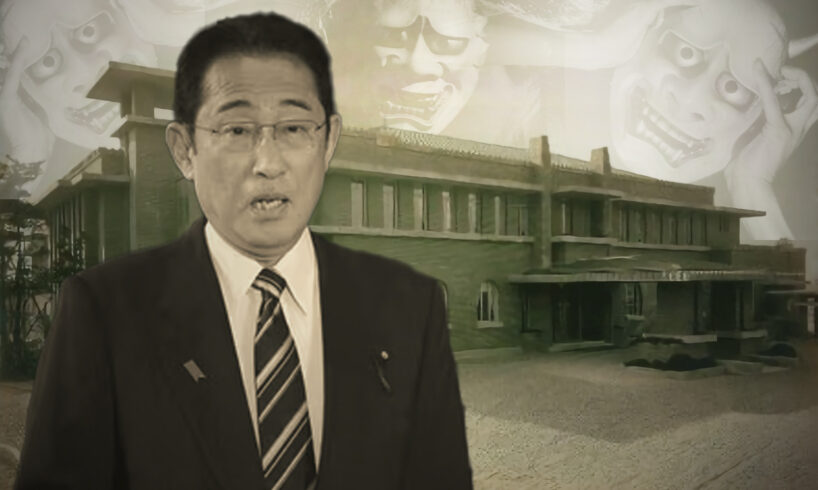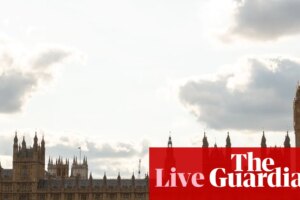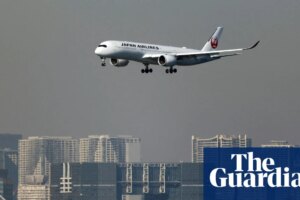
Japanese fans of the occult or just kids daring each other love visiting Japan’s many supposedly haunted sites, from Tokyo’s old execution grounds to the site of a mass samurai suicide. But there is one place where almost none dare to venture. Not because it’s more haunted than anywhere else in the country but because anyone sneaking in at night risks arrest at best, and gunfire at worst.
The authorities do not take too kindly to uninvited guests at the Japanese prime minister’s official residence — at least not the corporeal kind. They’ve apparently been ignoring the ghostly ones for decades now.
Prime Minister Tsuyoshi Inukai
A History of Bloody Incidents
Located in Tokyo’s Nagatacho ward, the prime minister’s official residence was constructed in 1929. Inspired by Frank Lloyd Wright’s Imperial Hotel, the two-story stone and brick mansion totals about 5,200 square meters. Therefore, it works out to one violent coup attempt per 2,600 square meters, which isn’t that many violent coup attempts, but it’s still eerie that it happened twice in what should be the safest building in Japan.
During the May 15 Incident of 1932, Prime Minister Tsuyoshi Inukai was gunned down inside his residence by young naval officers opposing Western influences and hoping to install a military dictatorship. They also plotted to kill Charlie Chaplin — who was invited to a VIP banquet by Inukai but changed his schedule last minute — in hopes to spark war with the United States. The assassins received very light sentences.
More blood soaked into the stone of the residence during the February 26 Incident of 1936 when rebel soldiers made an attempt on the life of Prime Minister Keisuke Okada. He narrowly escaped by hiding in a closet but, sadly, his brother-in-law and five others were slain that day.
Jokes in Public, Exorcisms in Private
A bullet hole supposedly fired on February 26, 1936, has been preserved near the main entrance of the prime minister’s residence. On the one hand, it is important to remember history, no matter how unpleasant. On the other, this is exactly how you get ghosts. Generations of prime ministers, their staff and their families swear they saw them.
The wife of Prime Minister Tsutomu Hata wrote in her 1996 memoir that she felt an oppressive presence while staying at the residence and even saw spirits in old military uniforms in the garden.
Prime Minister Yoshiro Mori reportedly also told Shinzo Abe that he had seen strange apparitions in the building. As rumors spread, the media ate it up, often asking new prime ministers if they were afraid of moving into the ghost house of Nagatacho. The politicians usually laughed it off in front of the cameras, though accounts suggest it’s a whole different story behind closed doors.
Junichiro Koizumi lived in the official residence for about a year before moving out during renovations. Rumors claim he arranged a private exorcism of the place before vacating it.
Renovation work on the historic building between 2002 and 2005 also supposedly included a Shinto cleansing ceremony, though such rites are common when it comes to Japanese construction. Still, it would also be the perfect cover for some stealth ghostbusting.
The Supposed Curse of the PM’s Residence
The first time Abe became prime minister in 2006, he lived at the official residence and served only one year in the role. In 2013, during his second turn, he “joked” that he wouldn’t be returning to the Nagatacho house “because there are ghosts.” Instead, he chose to live at his private residence in Shibuya.
That time, he stayed on the job for seven years and 266 days and still holds the record of the longest-serving prime minister in Japanese history. Some attribute his success to avoiding the prime minister’s haunted residence.
For years, an urban legend has held that those who lived at the place where Inukai was murdered wouldn’t last long as prime minister. After Abe’s first 1-year stint, five other prime ministers moved into the Nagatacho residence and each stepped down in less than 18 months. Yukio Hatoyama lasted only 266 days. Abe broke that streak during his second stint.
Abe’s successor, Yoshihide Suga, chose to live in parliamentary housing rather than the official residence and served barely more than a year. Conversely, the media made a lot of noise about the next leader, Fumio Kishida, being the first prime minister in nearly a decade to live at the residence. He stuck around for three years, which in Japanese PM years is basically an eon.
After Kishida, Shigeru Ishiba became prime minister, also changing his address to the Nagatacho residence, and he’s set to resign after about a year on the job. The conclusion writes itself: The official residence is haunted, and Kishida has access to top-notch exorcists that he is not sharing.
Related Posts
Discover Tokyo, Every Week
Get the city’s best stories, under-the-radar spots and exclusive invites delivered straight to your inbox.





